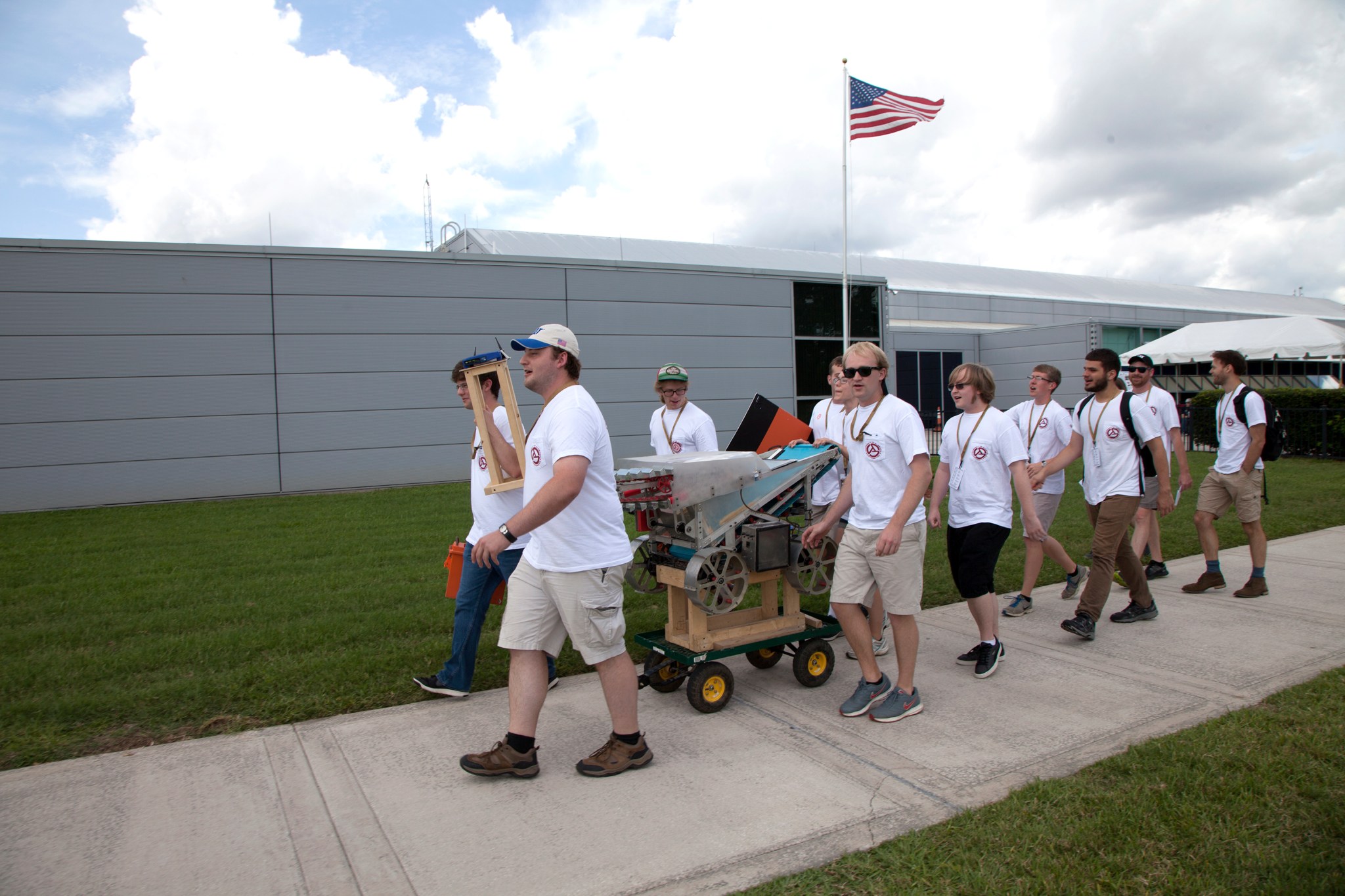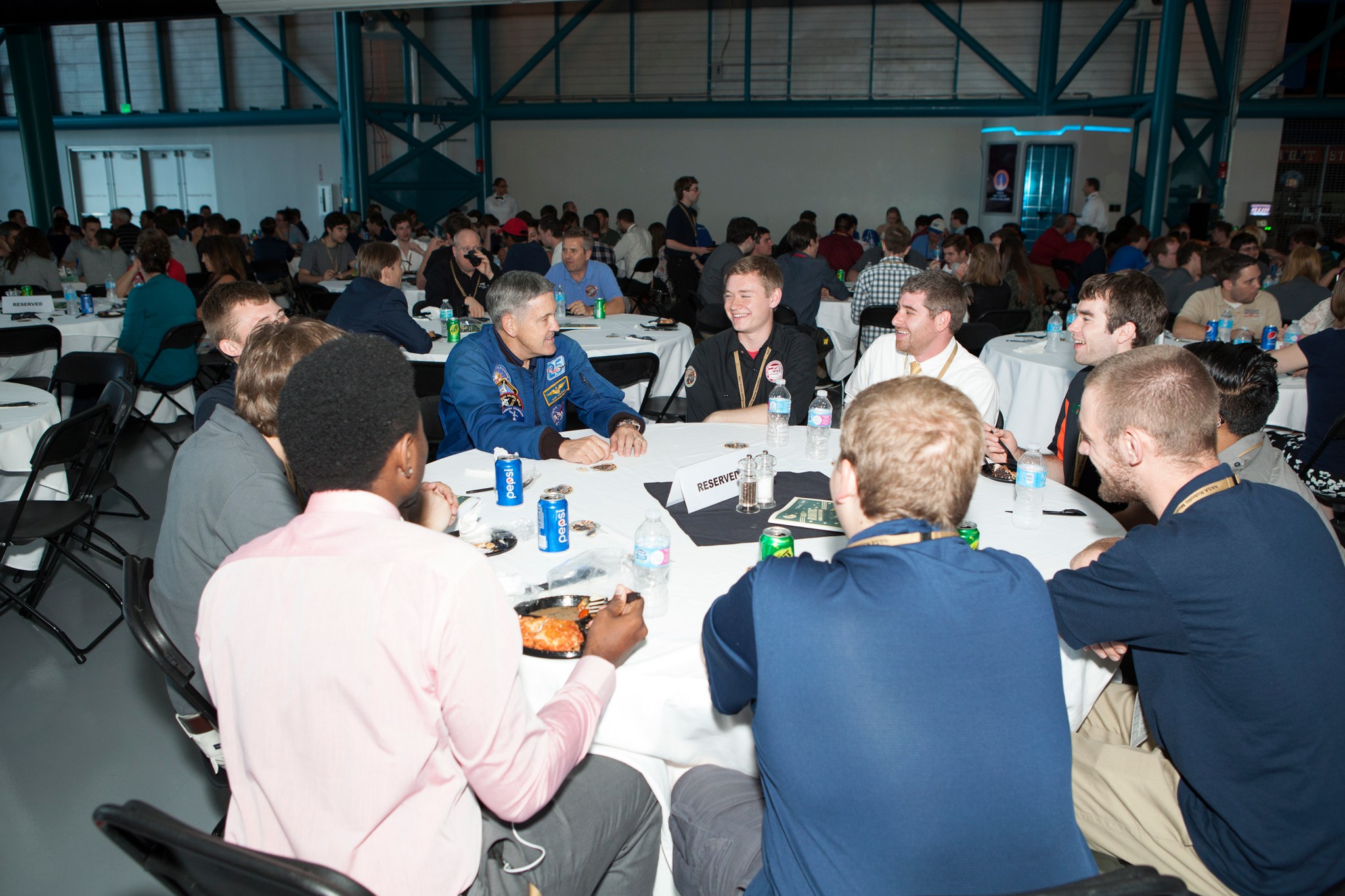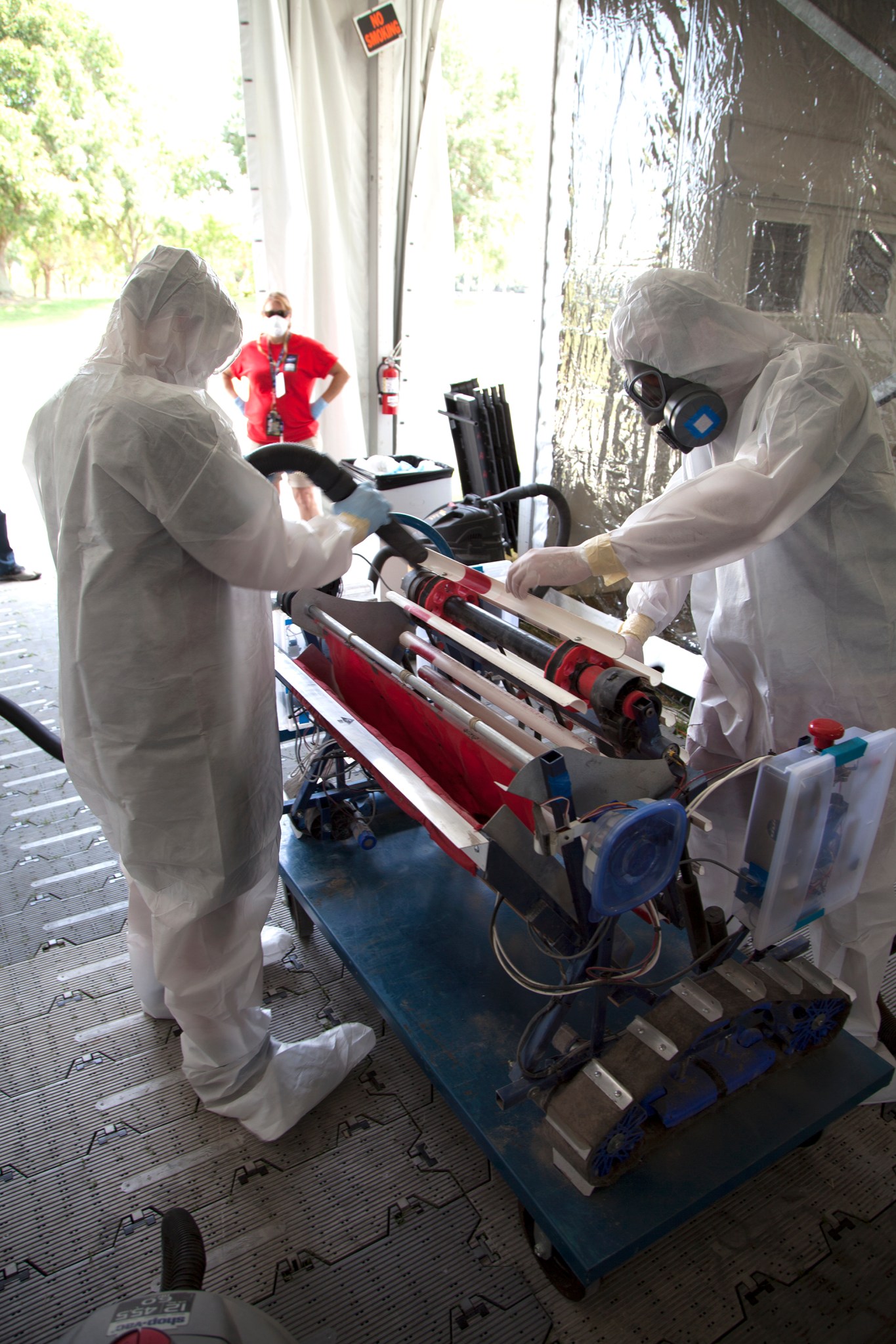Students from the University of Alabama, Tuscaloosa, earned the top award at this year’s Robotics Mining Competition at NASA’s Kennedy Space Center in Florida. Hosted by NASA, the annual contest gives students from across the nation the chance to design, build and then operate robotic explorers in a bin loaded with simulated Martian soil called regolith.
Although the teams get to decide whether to give their robots direction by remote control or program them to work autonomously, the machines are tasked with collecting as much regolith as they can and then depositing it into a container, and all with a simulated communications lag akin to the one real robots on Mars face. The robot that gathers the most wins their respective category.
The participants are pushing for trophies, to be sure, but the experience is a one-of-kind benefit to those who take part in the competition, they said.
“You get a feel for what industry is like,” said Joe Kabalin of the Alabama Astrobotics team. “You get to talk to people all over the country, all different disciplines and then you get to come here and meet other teams that have solved the same problem, but in a completely different way. Seeing how people think and solve a problem is a very valuable experience.”
Participants across the board said persistence is the top skill for any squad to bring to the competition because the machinery, software and simply handling the unusual soil make smooth operations very rare.
“Our first practice round showed us a few problem areas but we fixed those overnight,” said Will Leishman, a sophomore from Montana Tech in Butte who was part of the school’s 15-member squad.
While some teams comprise two dozen members or more, there are also small groups at the competition, such as the team of three from John Brown University in Siloam Springs, Arkansas. Their motto: Three engineers, three robots.
“I enjoy the chance to go out and do something new and novel,” said Matthew Stoering of John Brown University. “For us, we’re working with a technology that is two years old, so if you google it you don’t get anything. We get to develop really new and innovative solutions.”
The simulated regolith – which carries similar properties to that of soil found on the moon and Mars – was not chosen by accident. By using materials similar to what its own probes encounter on other worlds, NASA could see a new technology tested at the competition that can be employed on future missions as the agency works toward eventually sending astronauts to deep-space destinations including the red planet.
The event also is meant to spur interest in science, math, technology and engineering education by giving students a chance to lead and execute projects that take years or more to develop in the professional world.
This year’s participants said they want their success to be a beacon to younger students who are now in high school and middle school and are just considering the career path they might take as they move toward college.
“It’s definitely a journey, but you can see that it’s doable and you have to stick with it,” said Sean Donovan of Milwaukee School of Engineering in Wisconsin.
Innovation Award
The University of Utah
SSERVI Regolith Mechanics Innovation Award
Embry-Riddle Aeronautics University
Caterpillar Autonomy Award
1st – The University of Alabama
2nd – South Dakota School of Mines
Communication Award
The University of Akron
Systems Engineering Paper Award
1st – The University of Illinois Urbana-Champaign
2nd – Oakton Community College
3rd – The University of Illinois at Chicago
Outreach Project Award
1st – University of North Dakota
2nd – Iowa State University
3rd – Oakton Community College
Social Media and Public Engagement Award
1st – Iowa State University
2nd – Oakton Community College
3rd – The University of Alabama
Slide Presentation and Demonstration Award
1st – The University of Alabama
2nd – University of North Dakota
3rd – Colorado School of Mines
On-Site Mining Award
1st – Alabama Astrobotics from The University of Alabama
2nd – Moon Pi from Embry-Riddle Aeronautical University
3rd – Oakton Robotics from Oakton Community College
Joe Kosmo Award for Excellence
The University of Alabama





























